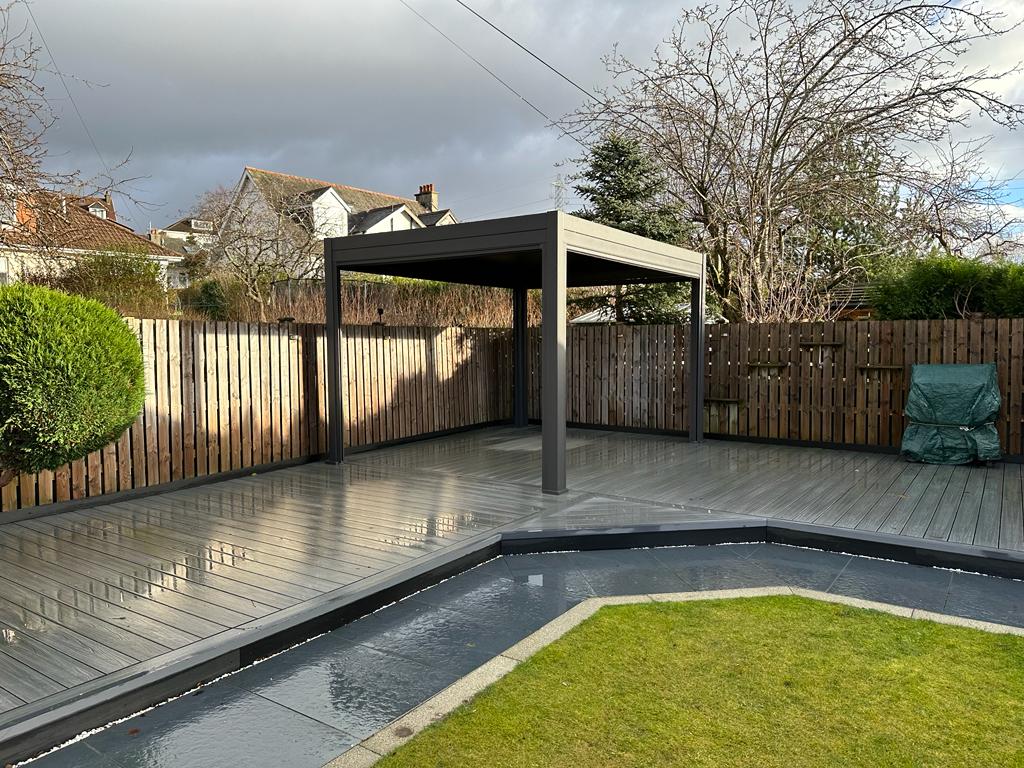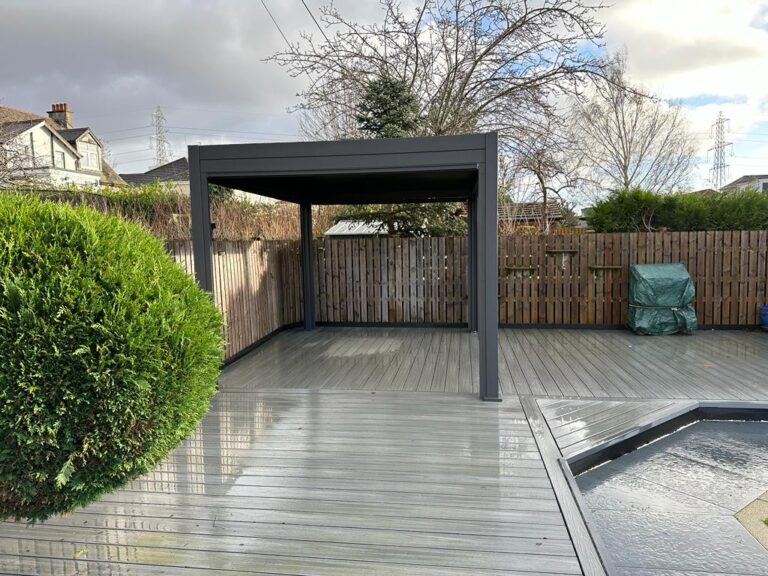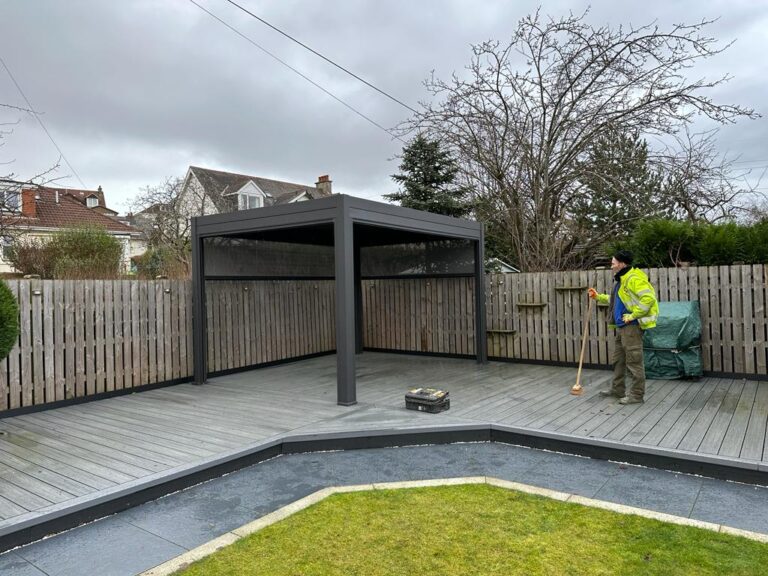Are you tired of constantly battling with a dirty-looking composite deck? Despite regular maintenance, do you find it challenging to keep your deck looking clean and pristine? In this comprehensive guide, we’ll delve into the reasons why composite decks tend to accumulate dirt, mold, and stains. We’ll explore the common culprits such as mold, mildew, dirt, debris, and food and drink stains that mar the appearance of your deck. We’ll provide you with practical and effective cleaning methods, including gentle cleaners and soft bristle brushes, to restore your deck’s beauty. We’ll highlight the products and methods to avoid, such as bleach and pressure washers, which can damage your composite deck. We’ll discuss preventive measures like using protective sealants, promptly cleaning up spills, and using furniture pads to maintain the cleanliness of your deck. By the end of this article, you’ll be equipped with the knowledge and techniques to rejuvenate and preserve the visual appeal of your composite deck. So, let’s dive in and uncover the secrets to a spotless and inviting outdoor space!

What Is a Composite Deck?
A composite deck is a sustainable and eco-friendly wood alternative that offers a low-maintenance, long-lasting outdoor flooring solution, leveraging high-quality innovative technology.
It is constructed from a blend of wood fibres and recycled plastics, making it an environmentally conscious choice for outdoor living spaces. The innovative technology used in composite decking enhances its resistance to rot, mould, and insect damage, ensuring durability and longevity. Its low-maintenance nature means minimal upkeep and no need for staining or sealing, saving both time and resources.
With the wide range of colours and styles available, composite decks provide a customisable and stylish addition to any outdoor environment while promoting sustainability and eco-friendliness.
What Causes a Composite Deck to Look Dirty?
Several factors can contribute to a composite deck appearing dirty, including the accumulation of mould, mildew, algae, stains, discolouration, and weathering, necessitating regular maintenance and cleaning.
These elements thrive in environments with high moisture levels and shade, creating an ideal setting for their growth. Stains and discolouration may result from organic debris or spills, while weathering can cause the surface to lose its vibrancy. Routine upkeep is crucial in combating these issues and preserving the deck’s appearance and longevity.
Mold and Mildew
The presence of mould, mildew, and algae on a composite deck is often attributed to its composite material’s weather-resistant properties, which can create a conducive environment for moisture retention, necessitating preventive treatments to address these issues.
Composite decking’s resistance to weather conditions makes it a popular choice for outdoor spaces, yet it also creates an ideal environment for mould, mildew, and algae growth due to its moisture-retaining properties. To combat this, regular maintenance and prevention are essential. Applying mould and mildew inhibitors and using specialised cleaning solutions can prevent and treat these issues, preserving the aesthetics and structural integrity of the composite deck.
Dirt and Debris
The accumulation of dirt and debris on a composite deck can detract from its exterior appearance, highlighting the importance of regular cleaning to maintain its outdoor aesthetic and prevent the build-up of unsightly grime.
This is particularly crucial as composite decks are exposed to the elements, making them prone to accumulating dirt, leaves and other debris. Regular cleaning not only preserves the deck’s natural beauty but also prevents the potential deterioration of the surface. By proactively removing dirt and debris, homeowners can extend the lifespan of their composite deck while ensuring it remains a welcoming and visually appealing outdoor space.
Stains from Food and Drinks
Stains from food and drinks can lead to discolouration on a composite deck, affecting its appearance and satisfaction, highlighting the importance of using appropriate cleaning methods involving water, soap, and other suitable solutions.
These stains can be particularly stubborn and may penetrate the surface of the composite material, making it crucial to address them promptly. Regular cleaning with a mixture of water and mild soap can effectively remove most surface stains. For more stubborn or deeply ingrained discolouration, there are specialised composite deck cleaners and brighteners available, which can restore the deck’s original colour and appearance. By employing these cleaning methods, homeowners can efficiently maintain the aesthetic appeal and longevity of their composite decks.

How to Clean a Composite Deck?
Cleaning a composite deck involves regular maintenance to address issues such as algae growth and weathering, requiring methods like power washing, scrubbing, and brushing to effectively remove dirt and mitigate the impact of UV rays.
Regular maintenance is essential to preserve the integrity and appeal of a composite deck. To combat algae growth, begin by sweeping the deck to remove debris. Then, using a solution of warm water and mild detergent, scrub the surface with a soft-bristled brush. For more stubborn stains, consider power washing, but use a low-pressure setting to prevent damage. Rinse thoroughly with clean water, ensuring all traces of cleaning agents are removed to maintain the deck’s longevity.
Sweep or Rinse the Deck Regularly
Regular sweeping or rinsing of the composite deck is essential to maintain its cleanliness and prevent the accumulation of debris and moisture, forming a crucial part of the routine cleaning process.
This regular maintenance helps to safeguard the integrity of the composite material, prolonging the deck’s lifespan and preserving its aesthetic appeal. By removing leaves, dirt, and other organic matter, sweeping or rinsing prevents them from decaying and causing stains or discolouration. It also reduces the risk of mould and mildew growth, which can be detrimental to the deck’s structural stability. Ultimately, incorporating this simple yet vital step into your cleaning routine can significantly contribute to the long-term resilience and visual allure of your composite deck.
Use a Gentle Cleaner
Using a gentle cleaner is crucial in the cleaning process of a composite deck, as it helps to remove dirt and grime without damaging the wood fibres, while also contributing to the sealing and protection of the surface.
It is essential to choose a cleaner specifically formulated for composite materials to ensure that it effectively removes stains and debris without compromising the integrity of the deck. Gentle cleaners are designed to lift dirt and grime without harsh chemicals, which can potentially erode the wood fibres over time. These cleaners play a vital role in maintaining the surface sealing, preventing moisture penetration and prolonging the life of the deck. By incorporating a gentle cleaner into your deck maintenance routine, you can preserve its appearance and structural integrity for years to come.
Scrub with a Soft Bristle Brush
The use of a soft bristle brush for scrubbing is an effective method for maintaining a composite deck, as it helps address discolouration and maintain the surface’s aesthetic appeal, forming an essential part of deck maintenance.
The soft bristles of the brush are gentle yet effective in lifting dirt and debris from the deck’s surface without causing damage. This method ensures thorough cleaning without scratching or marring the composite material, preserving its integrity for long-term use.
Using a soft bristle brush allows for precision in reaching into crevices and difficult-to-reach areas, ensuring a comprehensive cleaning process. This approach not only enhances the visual appeal of the deck but also contributes to its longevity, making it an ideal choice for homeowners looking to maintain their composite deck’s pristine condition.
Rinse Thoroughly
Thorough rinsing of the composite deck after cleaning is crucial to ensure the removal of all cleaning residues, contributing to the preservation of its weather-resistant properties and overall satisfaction with the cleaning process.
This post-cleaning step is vital in preventing any chemicals or cleaning solutions from lingering on the surface, potentially compromising the deck’s durability. Through thorough rinsing, the deck’s weather-resistant properties can be fully retained, extending its lifespan and maintaining its visual appeal.
A complete rinse ensures that no residue is left behind, enhancing the satisfaction with the cleaning results and leaving the deck ready for safe and enjoyable use.
What Products Should Not Be Used to Clean a Composite Deck?
When cleaning a composite deck, it is important to avoid certain products such as bleach, pressure washers, and abrasive cleaners, as they can cause damage and compromise the surface’s integrity.
These products can lead to discolouration, weakening of the material, and even permanent damage to the protective finish of the composite deck. Bleach, for instance, can strip away the deck’s natural colour and break down the polymers, while pressure washers and abrasive cleaners can cause scratches and gouges, making the surface more prone to mould and mildew.
It is advisable to opt for gentle, non-abrasive cleaners specifically designed for composite deck maintenance to preserve its appearance and durability.
Bleach
The use of bleach for cleaning a composite deck can lead to discolouration and weathering, compromising the surface’s appearance and potentially affecting overall satisfaction with the cleaning solution.
In addition to causing discolouration and weathering, the harsh chemicals in bleach can wear down the protective surface of the composite decking, making it more susceptible to damage from the elements. This can lead to premature ageing of the deck and a less appealing aesthetic.
Homeowners may find that the use of bleach for cleaning their composite deck results in a lacklustre finish, diminishing the satisfaction of the cleaning process and potentially necessitating costly repairs or replacements.
Pressure Washers
The use of pressure washers for cleaning a composite deck can lead to damage and compromise the integrity of the composite material, requiring careful consideration of alternative cleaning methods to ensure proper care and maintenance.
Excessive pressure from power washers can cause the composite material to splinter, crack or become warped, impacting its durability and aesthetic appeal. The forceful spray can push water and debris between the boards, leading to moisture accumulation and potential mould growth.
It’s important to opt for gentler cleaning solutions such as mild soap and water with a soft brush or a specialised composite deck cleaner to maintain the deck’s longevity and appearance. Regular sweeping and occasional deep cleaning can effectively remove dirt and grime without risking damage from high-pressure washing.
Abrasive Cleaners
Abrasive cleaners can compromise the protective coat of a composite deck, leading to potential damage, emphasising the need to avoid such cleaning products.
These harsh cleaners can strip away the protective layer of the composite material, leaving it vulnerable to moisture, mould, and UV damage. The compromised appearance due to scratching and dulling can diminish the aesthetic appeal of the deck, impacting the overall kerb appeal of the outdoor space.
The weather-resistant properties are compromised, reducing the lifespan of the deck and requiring more frequent maintenance and repair.
How to Prevent a Composite Deck from Getting Dirty?
Preventing a composite deck from getting dirty involves proactive treatment, routine maintenance, and regular care to preserve its outdoor durability and enhance property value for homeowners.
This can be achieved by regularly sweeping off debris, cleaning up stains immediately, and using a gentle cleaning solution to scrub the surface. Applying a protective sealant can further safeguard the deck from moisture and sun damage.
It’s crucial to inspect the deck for mould or mildew growth, addressing any issues promptly. By following these preventive measures, homeowners can ensure their composite deck remains clean and enhances the overall aesthetic of their outdoor living space.
Use a Protective Sealant
Applying a protective sealant is a vital treatment for a composite deck, as it helps prevent moisture retention, contributes to sealing the surface, and enhances its weather-resistant properties, forming a crucial part of preventative care.
This process acts as a barrier against water infiltration, reducing the risk of mould, mildew, and rot, which can compromise the integrity of the deck. It also creates a protective layer that shields the surface from UV rays, preventing fading and discolouration over time.
In addition, a quality sealant can improve the composite material’s resistance to splintering and cracking, prolonging the lifespan of the deck and reducing maintenance requirements.
Clean Up Spills Immediately
Promptly clearing up spills on a composite deck is essential for regular maintenance to enhance satisfaction, preserve appearance, and prevent the potential impact of staining substances, emphasising the need for immediate action.
This proactive approach not only maintains the deck’s aesthetic appeal but also ensures its longevity. Neglecting spills can lead to the penetration of substances that may cause irreversible damage, compromising the deck’s integrity. Regularly clearing spills also prevents the buildup of mould and mildew, which can be detrimental to the deck’s overall condition. By taking immediate action, homeowners can safeguard their investment and enjoy an inviting outdoor space for years to come.
Use Furniture Pads
Using furniture pads is an effective preventative measure for composite deck maintenance, preserving satisfaction, and safeguarding the deck as a valuable investment through routine care and protection.
They create a barrier between the furniture and the deck surface, preventing scratches, indentations, and other potential damage. By minimising wear and tear, furniture pads help in maintaining the deck’s pristine appearance over time.
They distribute the weight of heavy furniture, reducing the risk of dents and imprints. This proactive approach not only extends the lifespan of the deck but also ensures that its value and aesthetic appeal are consistently preserved, offering homeowners peace of mind and long-term satisfaction.
Avoid Staining Substances
Avoiding staining substances is essential for the preventative care of a composite deck, as it helps mitigate potential weathering effects and preserves the surface’s appearance, emphasising the importance of proactive prevention.
This proactive approach involves regular cleaning with mild soap and water to remove dirt, debris, and potential staining culprits like oil and grease. Utilising protective mats under grills and furniture can prevent oil and grease from dripping onto the deck surface, reducing the risk of stubborn stains.
Emphasising the significance of preventative measures ensures that the deck maintains its allure and durability, enhancing the overall longevity and enjoyment of outdoor living spaces.








